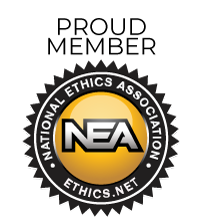What Do Zero-Percent Interest Rates Mean for You?
The coronavirus pandemic has launched the country, and the world, into uncharted territory. In much of the world, society is essentially shut down. Schools and large events are closed. People are staying in their homes. Businesses have effectively closed across the country.
The economy has felt the impact of the pandemic. Stocks have declined significantly, and unemployment has surged. On March 3, the Federal Reserve took action by cutting the fed funds rate to 0%. The Fed expects to maintain this rate until “it is confident that the economy has weathered recent events.”1
Given the unpredictability of the current pandemic, it’s hard to say how long rates might be at zero or how the economy may change in the future. However, changes to the fed’s benchmark rate often have ripple effects throughout the economy. Below are some things you may want to consider as we navigate a zero-rate environment for the near future:
Debt
Savings
Savers have unfortunately been used to low-interest rates for some time. Interest rates on savings accounts had started to climb, but after the Fed’s cut, the average FDIC rate is now down to 0.09%. While CDs may offer higher rates, they also come with less liquidity.
It’s always advisable to have liquid savings available to cover emergencies and unexpected costs. However, it may be difficult to find interest-bearing accounts for those savings at this time. We can help you explore all your options and develop a liquidity strategy that’s right for your needs and goals.
Investments
There’s a misconception that a Federal Reserve rate cut always leads to gains in the stock market. One need looks no further than the most recent cut to see that it’s not true. When the Fed cut rates on March 3, the Dow Jones Industrial Average fell nearly 800 points.2
These are unprecedented times and it’s impossible to predict when the pandemic will end or how it will fully impact investors. While interest rates are a factor, there are many others to consider. Your retirement income strategy should be based on your unique needs and goals.
Now could be the right time to review your strategy and make adjustments. A change in allocation could be appropriate. You also may want to take advantage of financial vehicles that limit your exposure to risk. A financial professional can help you find the right strategy for your needs.
Ready to review your retirement income strategy? Let’s talk about it. Contact us today at Retirement Advisers.Net. We can set up a virtual consultation, so you don’t have to leave the comfort and safety of your home. Let’s connect today and start the conversation.
1https://www.usatoday.com/story/money/2020/03/03/coronavirus-dow-jones-stocks-react-after-fed-cuts-interest-rates/4938447002/
2https://www.usatoday.com/story/money/2020/03/03/coronavirus-dow-jones-stocks-react-after-fed-cuts-interest-rates/4938447002/
Licensed Insurance Professional. This information is designed to provide a general overview with regard to the subject matter covered and is not state specific. The authors, publisher and host are not providing legal, accounting or specific advice for your situation. By providing your information, you give consent to be contacted about the possible sale of an insurance or annuity product. This information has been provided by a Licensed Insurance Professional and does not necessarily represent the views of the presenting insurance professional. The statements and opinions expressed are those of the author and are subject to change at any time. All information is believed to be from reliable sources; however, presenting insurance professional makes no representation as to its completeness or accuracy. This material has been prepared for informational and educational purposes only. It is not intended to provide, and should not be relied upon for, accounting, legal, tax or investment advice. This information has been provided by a Licensed Insurance Professional and is not sponsored or endorsed by the Social Security Administration or any government agency. 19959 - 2020/3/31




